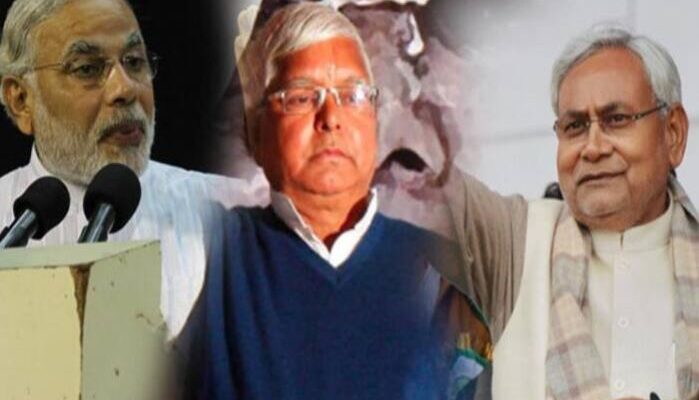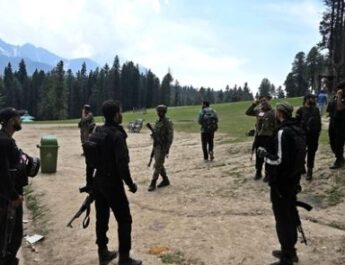New Delhi: In a strategic move just months ahead of the Bihar assembly elections, the Union government has announced that the upcoming decennial census will, for the first time since 1931, include documentation of all castes, extending beyond just Scheduled Castes and Scheduled Tribes in the country.
The ruling coalition in Bihar, spearheaded by Nitish Kumar’s Janata Dal (United) and the BJP, appears to aim at countering the caste-based mobilization efforts of the Congress and the Rashtriya Janata Dal (RJD), while also attempting to mitigate the PDA (Pichhda, Dalit, Alpsankhyak) narrative that is believed to have posed challenges for the BJP in Uttar Pradesh during the 2024 Lok Sabha elections.
However, in Bihar, where a 2022 state survey indicated that Other Backward Classes (OBCs) and Extremely Backward Classes (EBCs) together make up approximately 63 percent of the population, new fieldwork is unlikely to reveal significantly different statistics.
More importantly, the aspirations of these communities for a 65 percent reservation cap were thwarted when the Patna High Court invalidated the state’s quota expansion in June 2024. As the state approaches the elections, one is left to ponder whether the national census will truly effectuate any tangible changes on the ground, fostering social momentum for the ruling alliance, or if it is merely a repetition of commitments that falter under judicial examination.
PRELUDE TO A CENSUS
Postponed from 2021 due to the Covid pandemic, the upcoming census will finally require every household to report its caste. Union Minister of Information and Broadcasting Ashwini Vaishnaw characterized this decision as a commitment to ‘social justice and transparency’.
Under the existing affirmative action policies, Other Backward Classes (OBCs) are allocated 27 percent of the 50 percent reservation quota. However, in Bihar, the situation presents a paradox. The 2022 survey indicated that OBCs constituted 27.12 percent and Economically Backward Classes (EBCs) made up 36.01 percent of the state’s population.
Armed with these statistics, the state legislature approved a measure in November 2023 to increase the reservation limit to 65 percent, only to have the Patna High Court annul the decision and uphold the Supreme Court’s 50 percent cap.
THE POLITICAL CALCULUS
For the BJP-JD(U) coalition, the caste census is being promoted as a significant act of inclusion, aimed at strengthening their support among backward communities. Leaders in Bihar have quickly asserted that this initiative validates their governance.
Nevertheless, it is challenging to overlook the contributions of Congress leader Rahul Gandhi, who has been advocating for a nationwide caste census for the past two years. However, beneath the celebratory language lies a more strategic approach: by proactively implementing the caste count, the National Democratic Alliance (NDA) undermines the Opposition’s most effective criticism.
RJD and Congress representatives have long accused the government of neglecting OBC and EBC interests—a claim that NDA leaders hope will lose its impact once the administration officially endorses comprehensive caste enumeration. The outcome remains uncertain.
HEARTLAND DISTRUST
Bihar’s previous attempt at collecting caste data serves as a warning. The 2022 survey aimed to establish a more equitable reservation system, igniting passionate discussions and leading to the enactment of the Reservation Amendment Bill, which allocated 18% of seats to OBCs and 25% to EBCs. However, in June 2024, the high court deemed these amendments ‘ultra vires,’ prompting both the Opposition and the ruling parties to reassess their approaches.
For many voters from backward classes, this incident intensified a longstanding skepticism: while data may be gathered and laws enacted, judicial decisions or bureaucratic delays can still hinder their pursuit of representation. Unless the upcoming census is supported by constitutional changes or favorable court rulings, it risks merely repeating past failures.
As the political landscape evolves, voters in Bihar remain cautiously observant. Will the census lead to prompt policy changes—such as increased quotas, reconfigured constituencies, or improved welfare initiatives? Or will it end up like the Bihar survey, collecting dust in bureaucratic archives? Analysts warn that mere enumeration is unlikely to influence voter allegiance.
With the memory of the failed quota law still fresh, communities will seek more than just numbers; they will demand robust legislation, swift implementation of benefits, and clear assurances of change.
BEYOND THE BALLOT
While Bihar is in the spotlight, the census will have implications across the country. Comprehensive caste data will reignite discussions about OBC quotas within the 50% limit and may lead to calls for a reevaluation of reservation policies on a state-by-state basis. It will also inform future delimitation processes, altering India’s electoral landscape.
In the immediate term, however, the caste census serves two primary purposes: it counters a significant critique from the Opposition and provides the ruling coalition with a new narrative of inclusivity. Whether this narrative resonates or fades into yet another story of unmet expectations will depend on the government’s commitment to transforming data into meaningful action.




